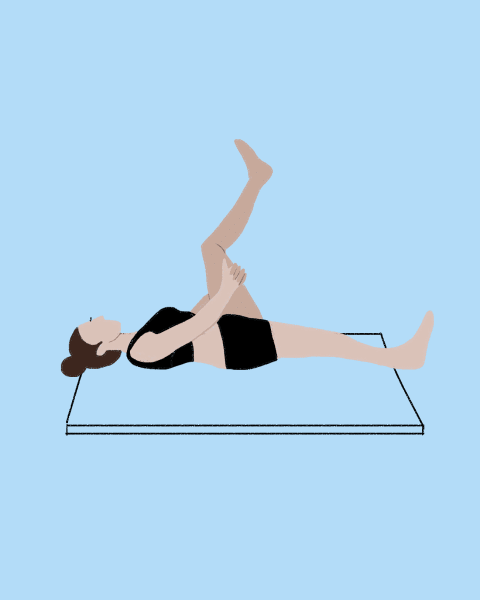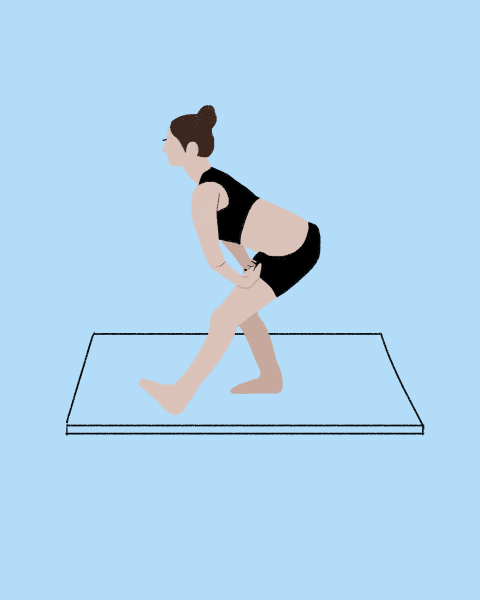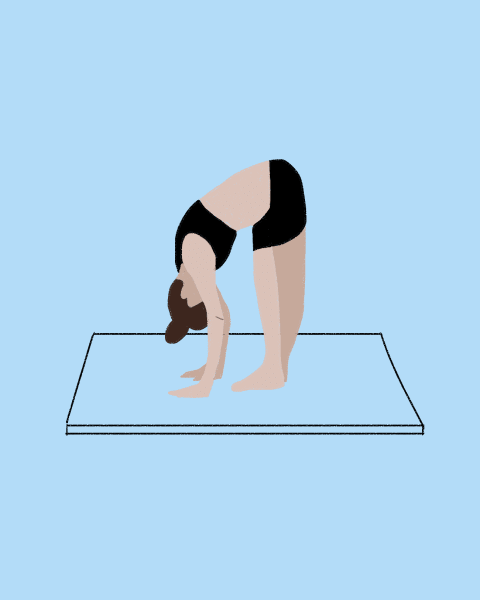But aside from a wince-inducing sensation, what exactly is hamstring tightness? And more importantly, what can you do about it? Here, we take a look at this common phenomenon that can affect pretty much everyone—from runners to HIIT enthusiasts to yoga devotees and even folks who aren’t all that active. We’ll explain what’s going on in your body when you experience hamstring tightness and give six simple stretches you can do to feel better ASAP. When you work your hamstrings to the point of fatigue, your body can register it as tightness, even though your muscle isn’t literally tight. Muscles also like movement, so when they’re stationary for too long, they can express that immobility as tightness, explains Ryan Balmes, PT, DPT, board-certified clinical specialist in orthopedics and sports physical therapy. Now onto the good news: While this tightness can be an uncomfortable and sometimes painful sensation, there are simple stretches you can do to alleviate it in the short-term. Let’s get into it. In terms of when to do these stretches, post-workout is a great time, says Balmes. You could also do the dynamic stretches (stretches that involve moving) before your workout as part of a warmup, as these types of stretches can potentially boost performance and decrease risk of injury, says Balmes. On the other hand, static stretches (stretches where you simply get into a position and hold), are a good idea post-workout, says Balmes. There’s no blanket recommendation of how often you should stretch your hamstrings, but if you’re looking for that tightness relief, a good rule of thumb is to simply stretch ‘em when then feel tight. You don’t need any equipment to complete these moves—just a chair and an object to rest your hand against for support (like a wall or a fence, for example). Let’s get into it. If you stretch your hamstrings too regularly-slash-intensely, the muscle group could lose its ability to contract efficiently, says Balmes. That means stretching could actually decrease your muscle’s ability to produce force. And too much stretching—if coupled with not enough strength training—could potentially lead to injury. That’s because you could end up having too much mobility and not enough strength to properly control your motion in certain scenarios. That said, you’d have to stretch pretty frequently and vigorously to get to this point, says Balmes—like, almost every single day for a considerable chunk of time while also forgoing any other form of training—so it’s probably not something most folks should worry about. But still, it’s a good reminder that it is possible to go overboard with stretching. The average person isn’t able to distinguish between sciatica (sciatic nerve pain) and non sciatica-related hamstring tightness, he explains, and that can be problematic if someone with sciatica tries to stretch their hamstring. Why? Well, unlike muscles, nerves do not like to be stretched, says Balmes, which means that stretching when you have sciatica can actually worsen the condition. So if your hamstring feels tight and stretching it seems to be causing more pain, you should stop stretching and instead visit a physical therapist who can help you appropriately treat the issue, says Balmes. On that note, if you feel like your pain is getting worse with stretching—or if you have chronic tightness in your hamstrings that lasts for three months or more—you should def go see a physical therapist, says Balmes. You may be dealing with a more complex situation that warrants a professional’s input.








